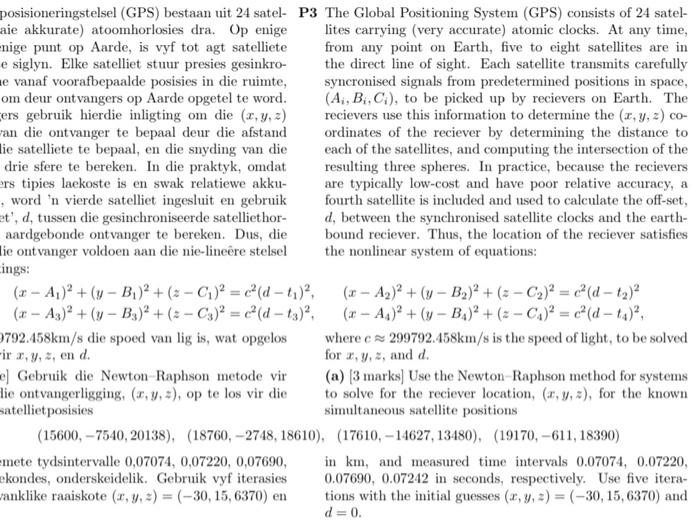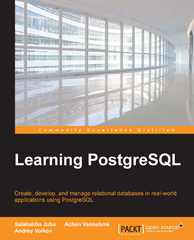please do 3a using matlab code

posisioneringstelsel (GPS) bestaan uit 24 satel- P3 The Global Positioning System (GPS) consists of 24 satelaie akkurate) atoomhorlosies dra. Op enige lites carrying (very accurate) atomic clocks. At any time, nige punt op Aarde, is vyf tot agt satelliete from any point on Earth, five to eight satellites are in e siglyn. Elke satelliet stuur presies gesinkro- the direct line of sight. Each satellite transmits carefully e vanaf voorafbepaalde posisies in die ruimte, syncronised signals from predetermined positions in space, om deur ontvangers op Aarde opgetel te word. (Ai,Bi,Ci), to be picked up by recievers on Earth. The ers gebruik hierdie inligting om die (x,y,z) recievers use this information to determine the (x,y,z) coran die ontvanger te bepaal deur die afstand ordinates of the reciever by determining the distance to lie satelliete te bepaal, en die snyding van die each of the satellites, and computing the intersection of the drie sfere te bereken. In die praktyk, omdat resulting three spheres. In practice, because the recievers ars tipies laekoste is en swak relatiewe akku- are typically low-cost and have poor relative accuracy, a word 'n vierde satelliet ingesluit en gebruik fourth satellite is included and used to calculate the off-set, et', d, tussen die gesinchroniseerde satelliethor- d, between the synchronised satellite clocks and the earthaardgebonde ontvanger te bereken. Dus, die bound reciever. Thus, the location of the reciever satisfies lie ontvanger voldoen aan die nie-linere stelsel the nonlinear system of equations: ings: (xA1)2+(yB1)2+(zC1)2=c2(dt1)2,(xA3)2+(yB3)2+(zC3)2=c2(dt3)2,(xA2)2+(yB2)2+(zC2)2=c2(dt2)2(xA4)2+(yB4)2+(zC4)2=c2(dt4)2 792.458km/s die spoed van lig is, wat opgelos where c299792.458km/s is the speed of light, to be solved ir x,y,z, en d. for x,y,z, and d. e] Gebruik die Newton-Raphson metode vir (a) [3 marks] Use the Newton-Raphson method for systems lie ontvangerligging, (x,y,z), op te los vir die to solve for the reciever location, (x,y,z), for the known satellietposisies simultaneous satellite positions (15600,7540,20138),(18760,2748,18610),(17610,14627,13480),(19170,611,18390) mete tydsintervalle 0,07074,0,07220,0,07690, in km, and measured time intervals 0.07074,0.07220, ekondes, onderskeidelik. Gebruik vyf iterasies 0.07690,0.07242 in seconds, respectively. Use five iteraranklike raaiskote (x,y,z)=(30,15,6370) en tions with the initial guesses (x,y,z)=(30,15,6370) and d=0








